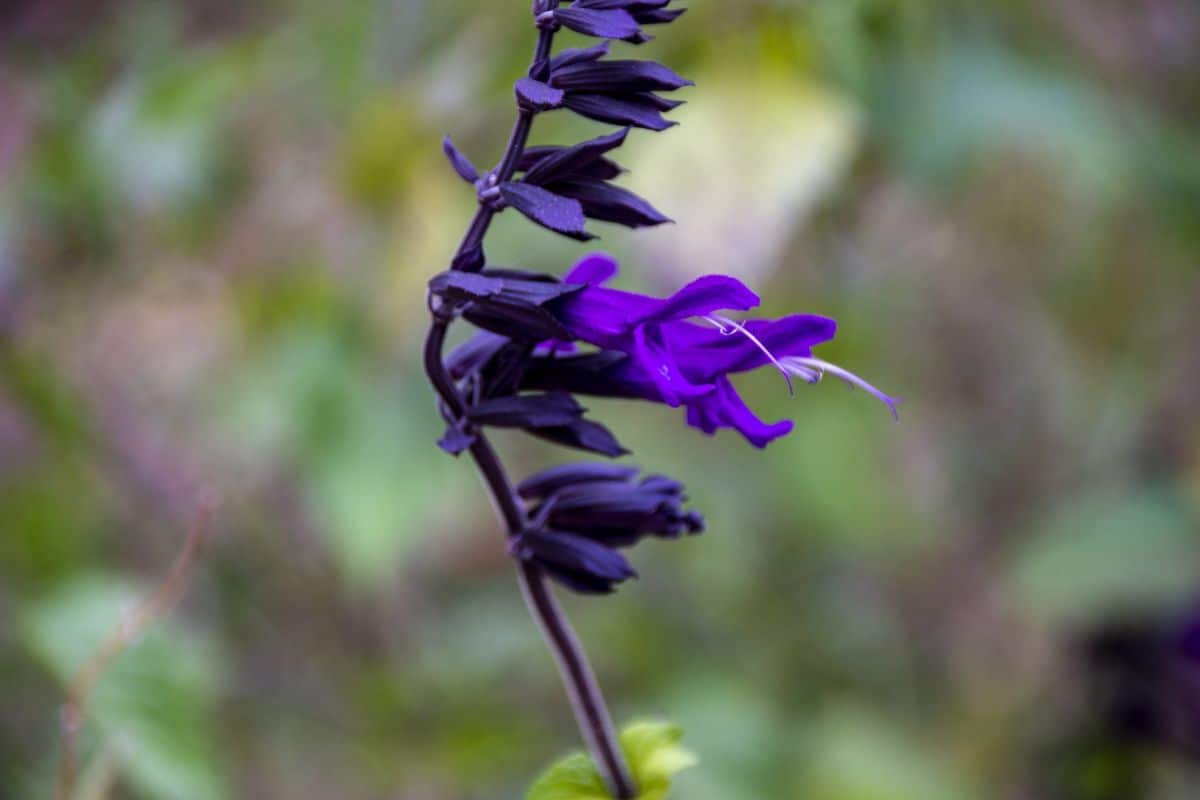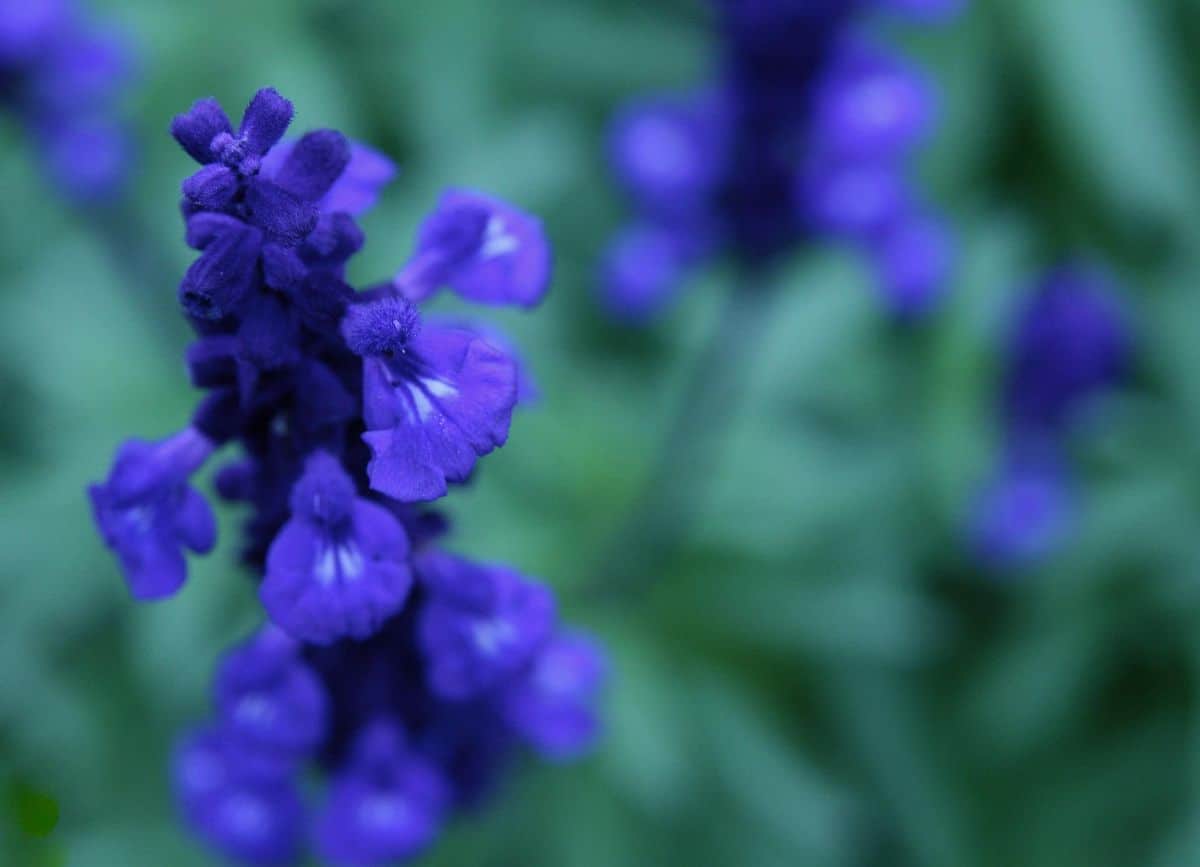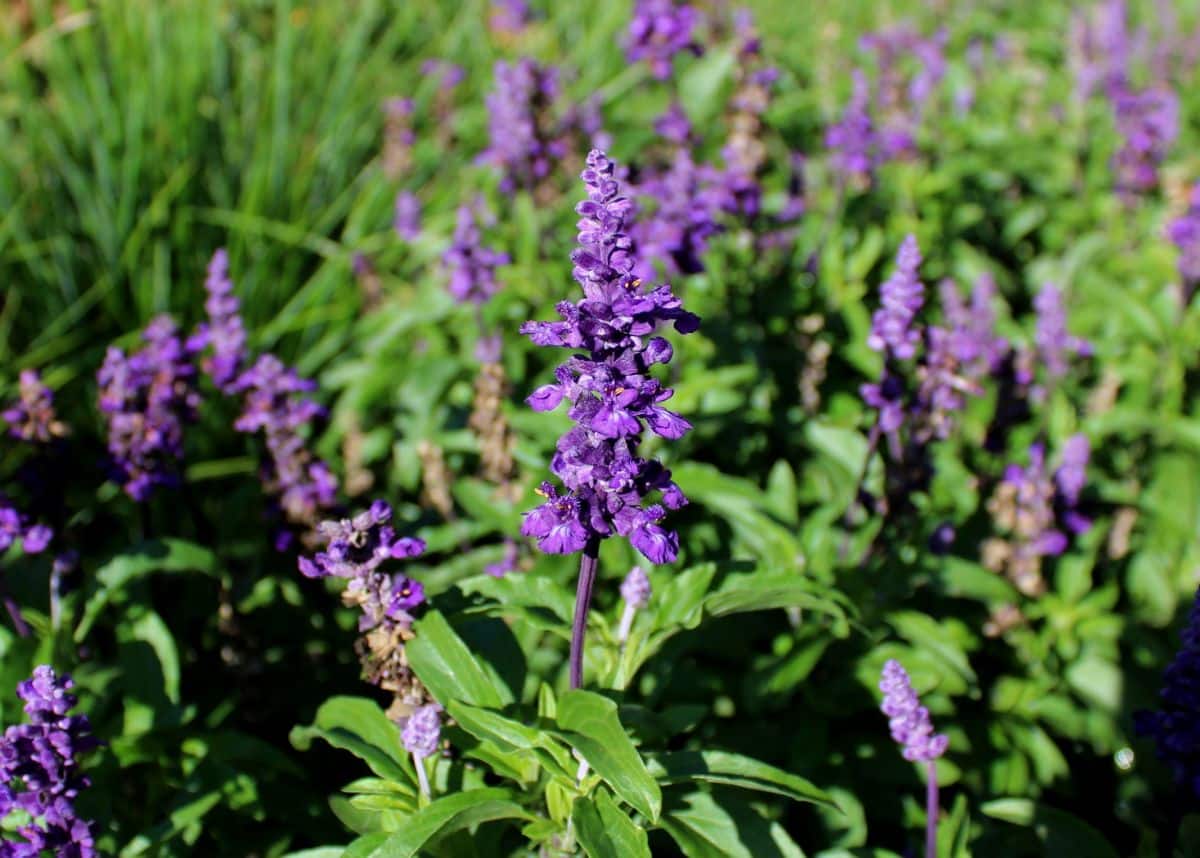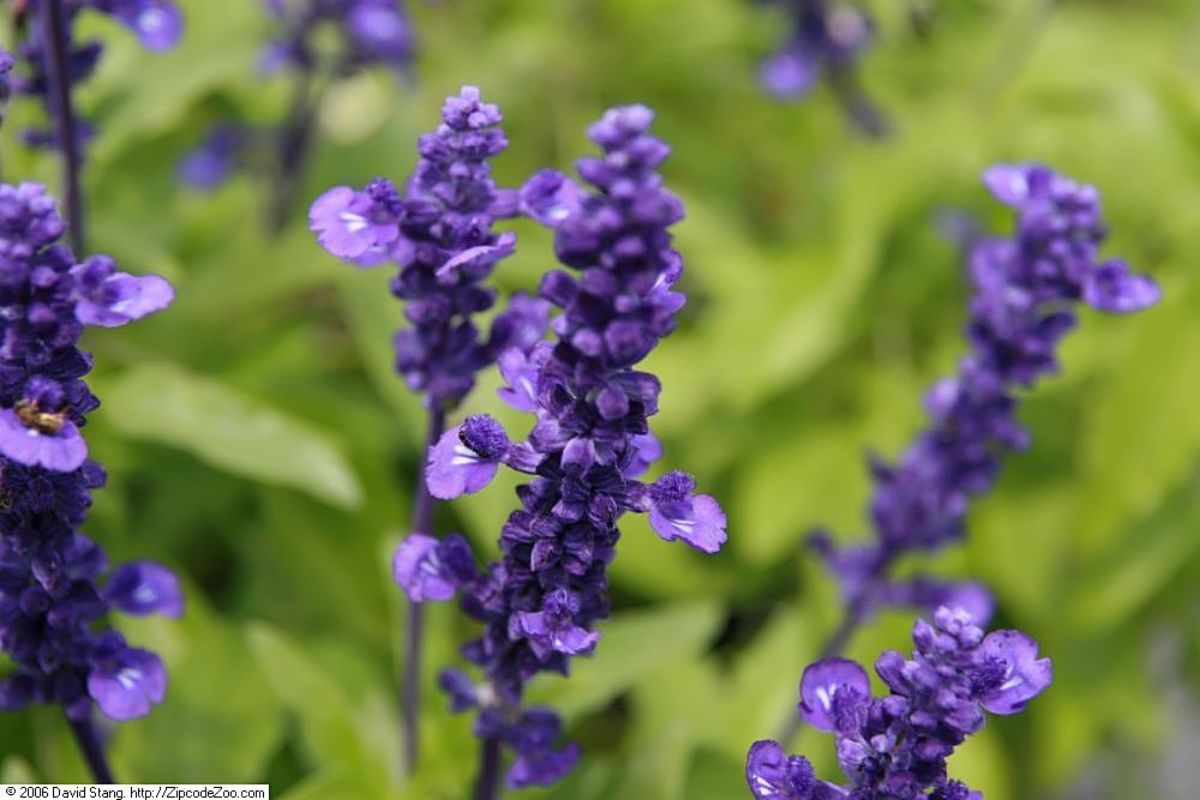
If you like plants in your garden, surely you have some common ones, but have you ever heard of blue salvia? With the botanical name Salvia farinacea, its care is very easy to comply with and in return it offers you a vision in the form of massifs or striking pots with the most beautiful flowers.
If you want to know more about this plant, and above all discover what are the simple care you need to be happy, then we will tell you everything. Go for it?
What is blue sage like?

The origin of Salvia farinacea is in Mexico and the United States. It is a herbaceous plant that has as main feature some pretty flowers, from late spring to late summer or even into autumn, with a very beautiful indigo blue color.
Plant does not exceed 90 centimeters in height and it has elongated and shiny leaves, from which the flowers come out. In addition, it tends to attract butterflies, but also bees (be careful if you don't like these insects).
Salvia farinacea care

Now that you have an idea in your mind of what Salvia farinacea is like, it is time to tell you about the care it will need. We have to say that it is not a plant that requires much, quite the opposite. But it is convenient that you know what is necessary so that it does not wither.
Location and temperature
The first thing you need to know is the place where the blue sage will be best. In this case it will depend on the climate you have. If the weather is cold, it is better to place it in a well-protected area (because it does not tolerate low temperatures) and where it gets the most direct sunlight.
Now, if you live in a warm climate, a semi-shaded area is best where it benefits from direct sunlight in the morning, but not in the afternoon.
From what we have said before, this sage does not tolerate low temperatures, so if you see that it loses all the leaves and part of the aerial zone, it is because it is suffering. Don't worry, because in spring it should recover if you protect it.
Speaking of temperatures, we can tell you that below -2ºC you will need extra protection. On the other hand, the heat does support it much better; that yes, the only thing that will ask you is that you water it more times, but except for that, you will not have anything else.
Earth
The ideal substrate for salvia will depend a lot on whether you have it planted in the ground or in a pot.
If it is in a pot, it is necessary to offer it a very fertile soil and as drained as possible. This implies that you have to use a soil rich in nutrients that you must mix with perlite or similar so that the soil is looser and the roots of the plant can easily expand through the holes.
Now, what if you have it in the garden? If possible, it is recommended that the land is also fertile and that it is somewhat loose, but the truth is that it can get used to it, at least if it is already an adult specimen and has been in the same area for a long time. Even so, it is better to fill the hole with mulch or similar to nourish it for the first few months.
Of course, if you are going to plant several salvias, make sure there is one minimum distance of 30 centimeters between them so that they do not get in the way or invade the space between them.
Irrigation

One of the most important care for Salvia farinacea is irrigation. You do not have to worry too much, because it is a plant that does not need to keep its soil moist all the time. But it does not like to suffer drought, so you must control the precise moment to water it.
In case you have it in a pot, it is best to wait to see how the soil dries before watering it. If you have it planted in the garden you will have more freedom because it does tolerate a short time of drought in those cases. In fact, when it is watered it must be abundant since the roots of this sage are quite deep and the water needs time to reach them.
Subscriber
Regarding an "extra" energy, you should consider that the plant will be much more active in spring and summer than in autumn and winter. That means that you will have to pay it during those months.
The best fertilizer for Salvia farinacea is earthworm humus or manure. if you apply it every 15 days your plant will thank you.
Plagues and diseases
We must start from the basis that it is one of the Salvia farinacea care that should worry you the least, because it is very resistant to both problems.
Now, that doesn't mean that nothing can attack him; in fact, it is usual that aphids delight in tender shoots, This is why you should monitor the development of your plant so that nothing happens to it.
Multiplication
If you like blue sage, you may want to breed it. And the truth is that you will be able to do it in two different ways. On the one hand, you have seeds, that for this you need to bloom and collect them. Of course, it is recommended that you keep them cold for a week and then plant them.
We do not assure you that they will all germinate, since it is a somewhat complicated process. For this reason, the following one that we explain to you is better.
And it is that, on the other hand, the way to reproduce Salvia farinacea can be by cuttings. This form is quite simple and is based on cut a piece, always at the tip of the branches (Choose a mature plant to have a higher chance of success). Once cut, you just have to stick it in the ground so that it can take root.
As you can see, the care of Salvia farinacea is not complicated at all, and in return you will obtain a plant with beautiful blue flowers, something unusual in the plant kingdom. These plants are not easy to find but if you look a little you will. Do you dare to try and take care of a blue sage?